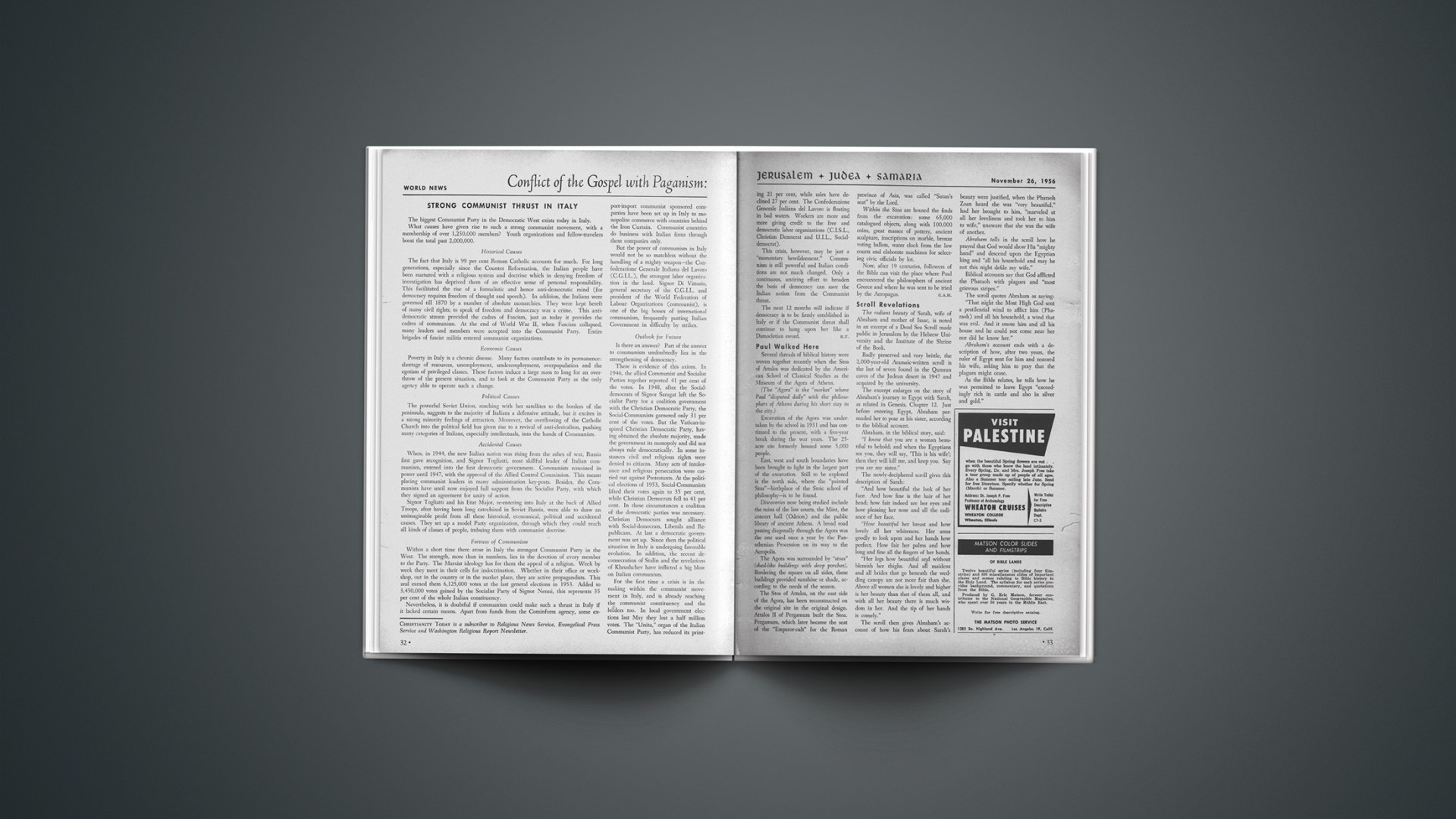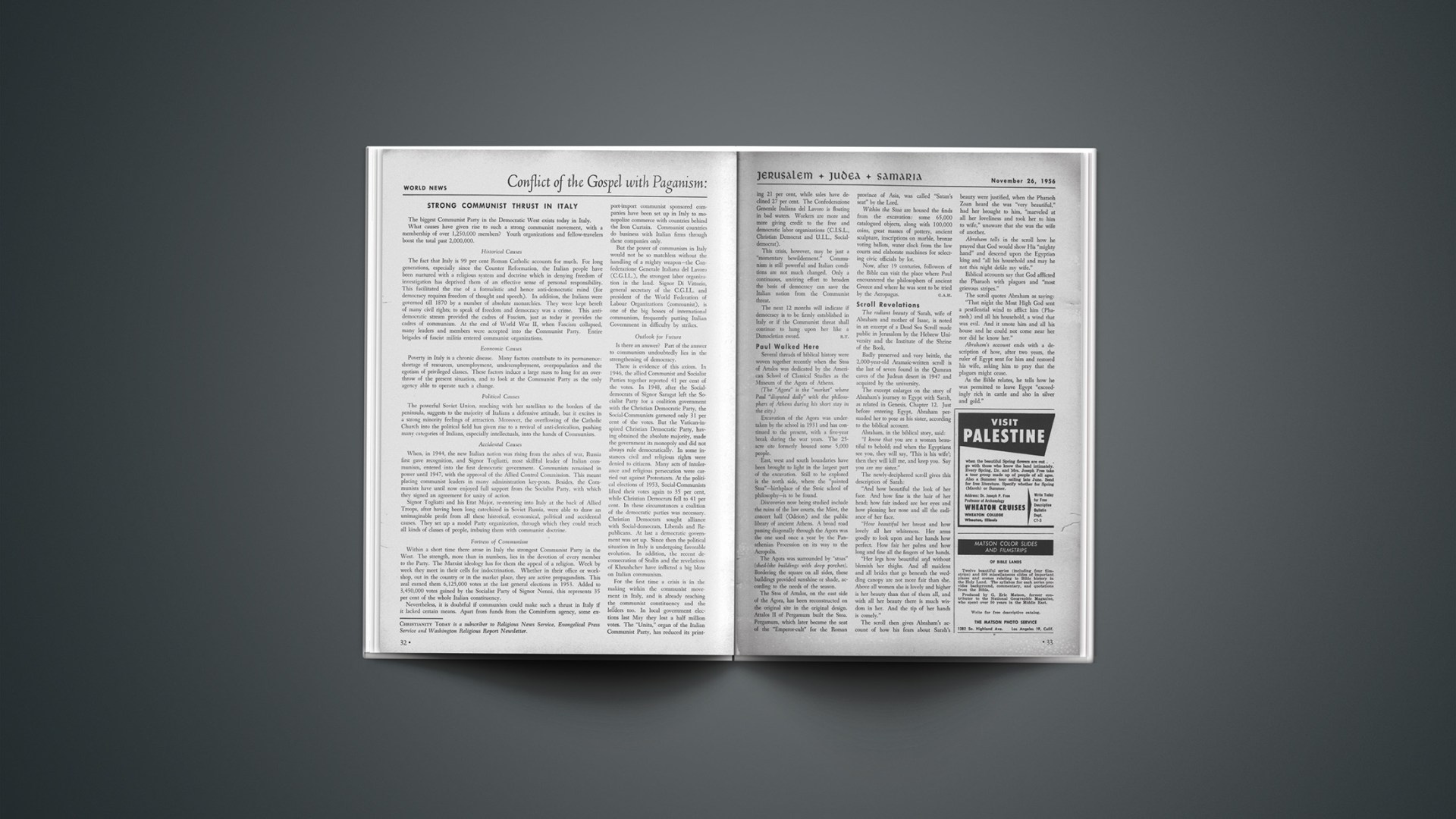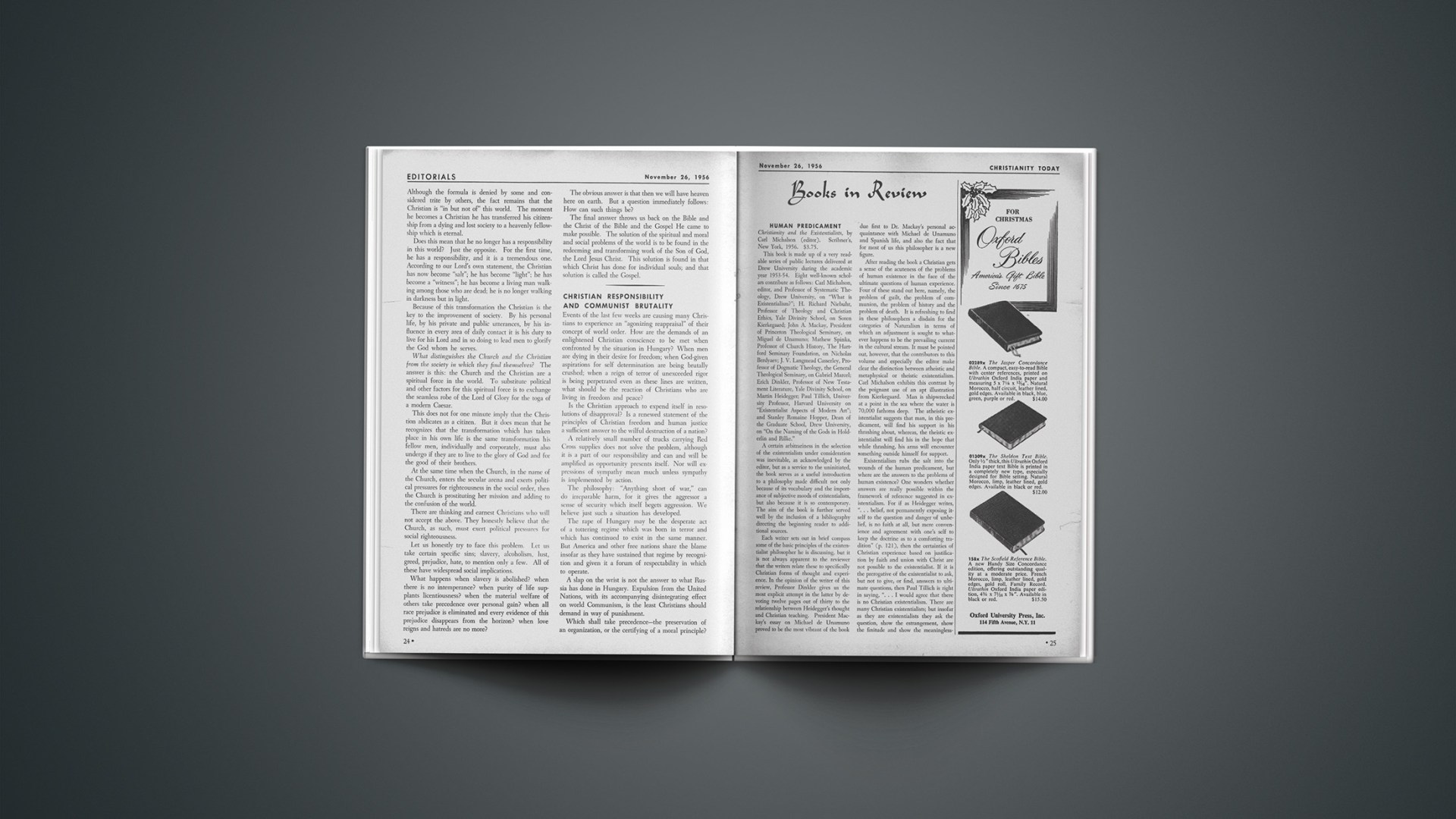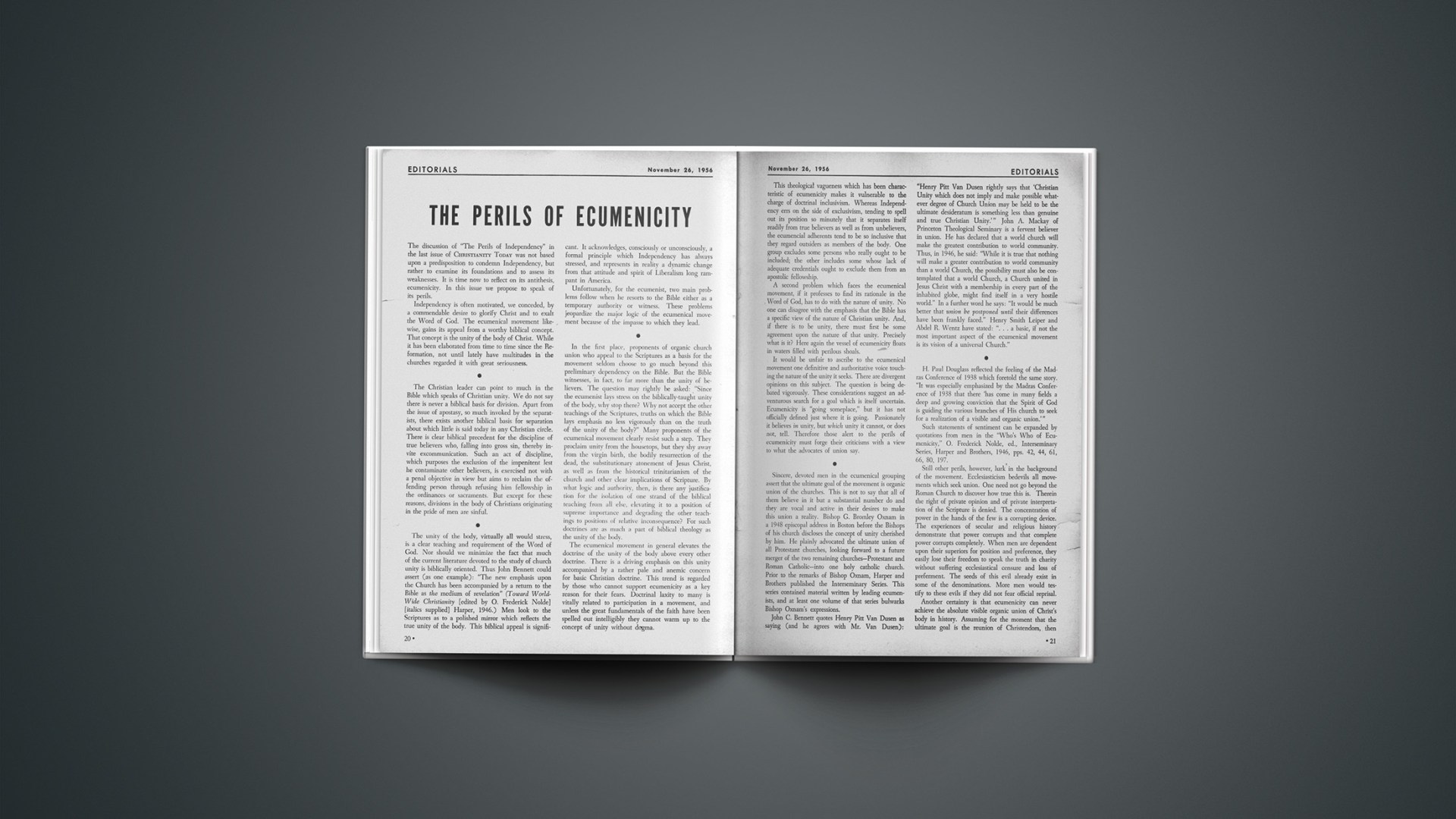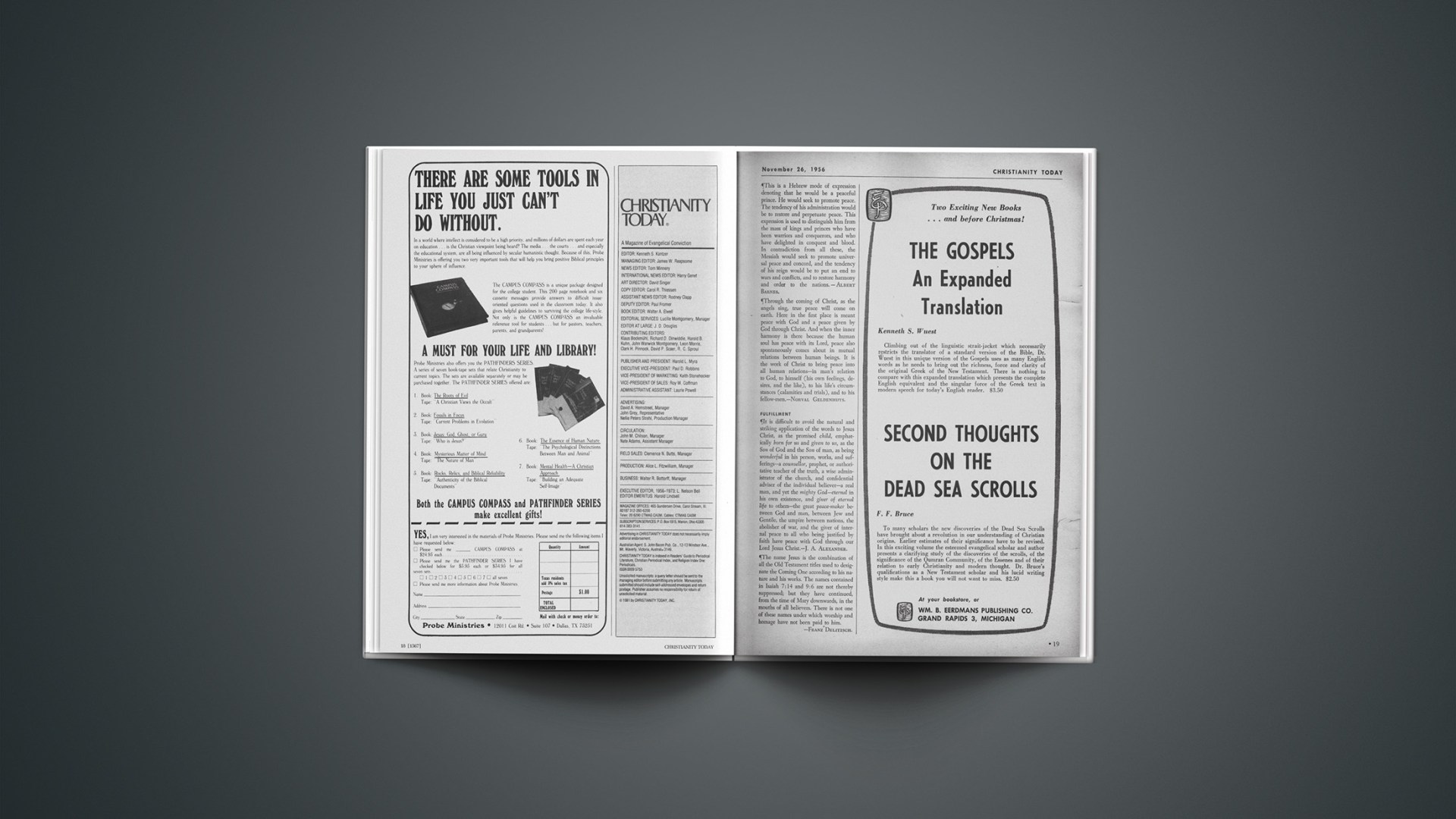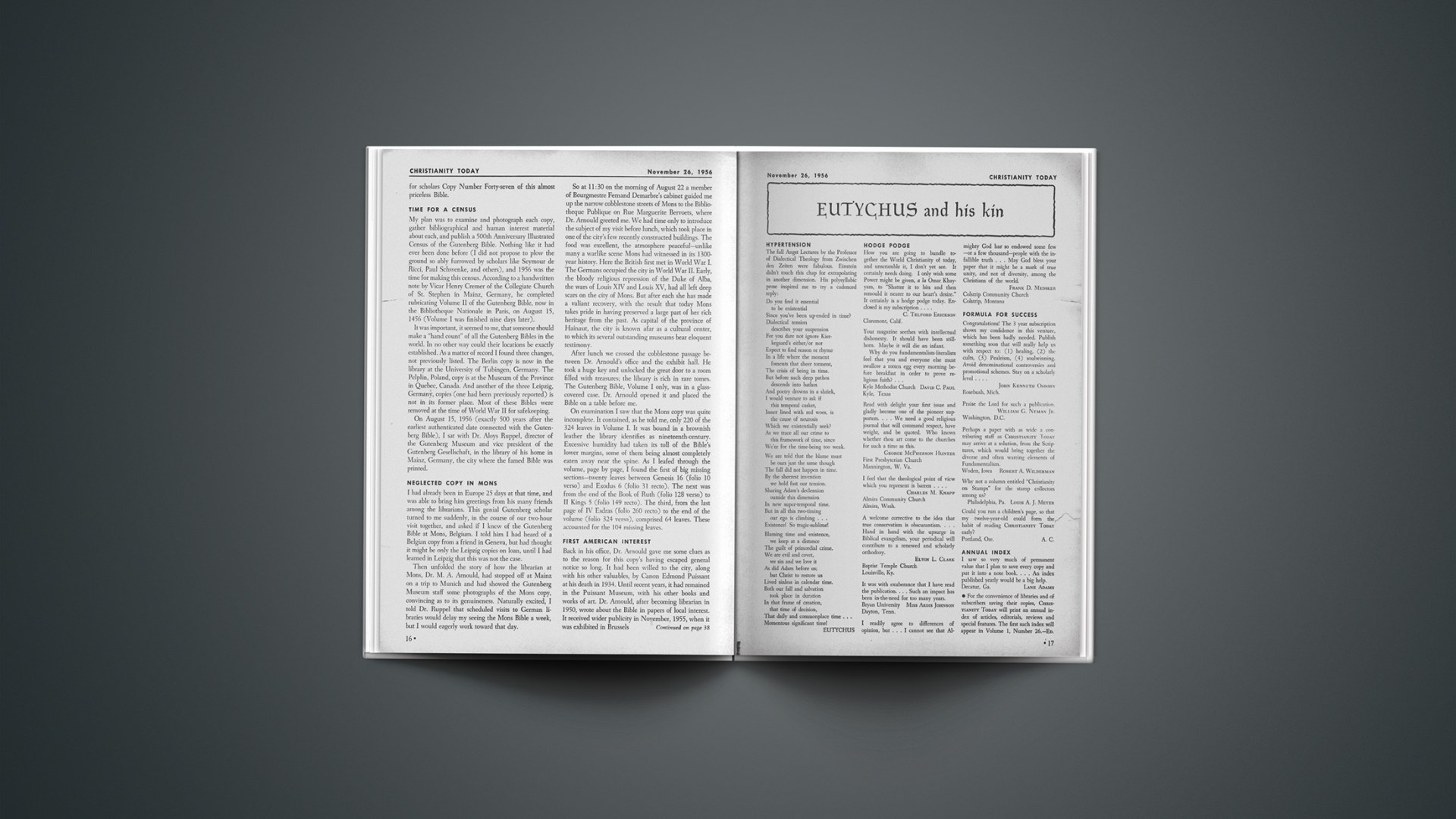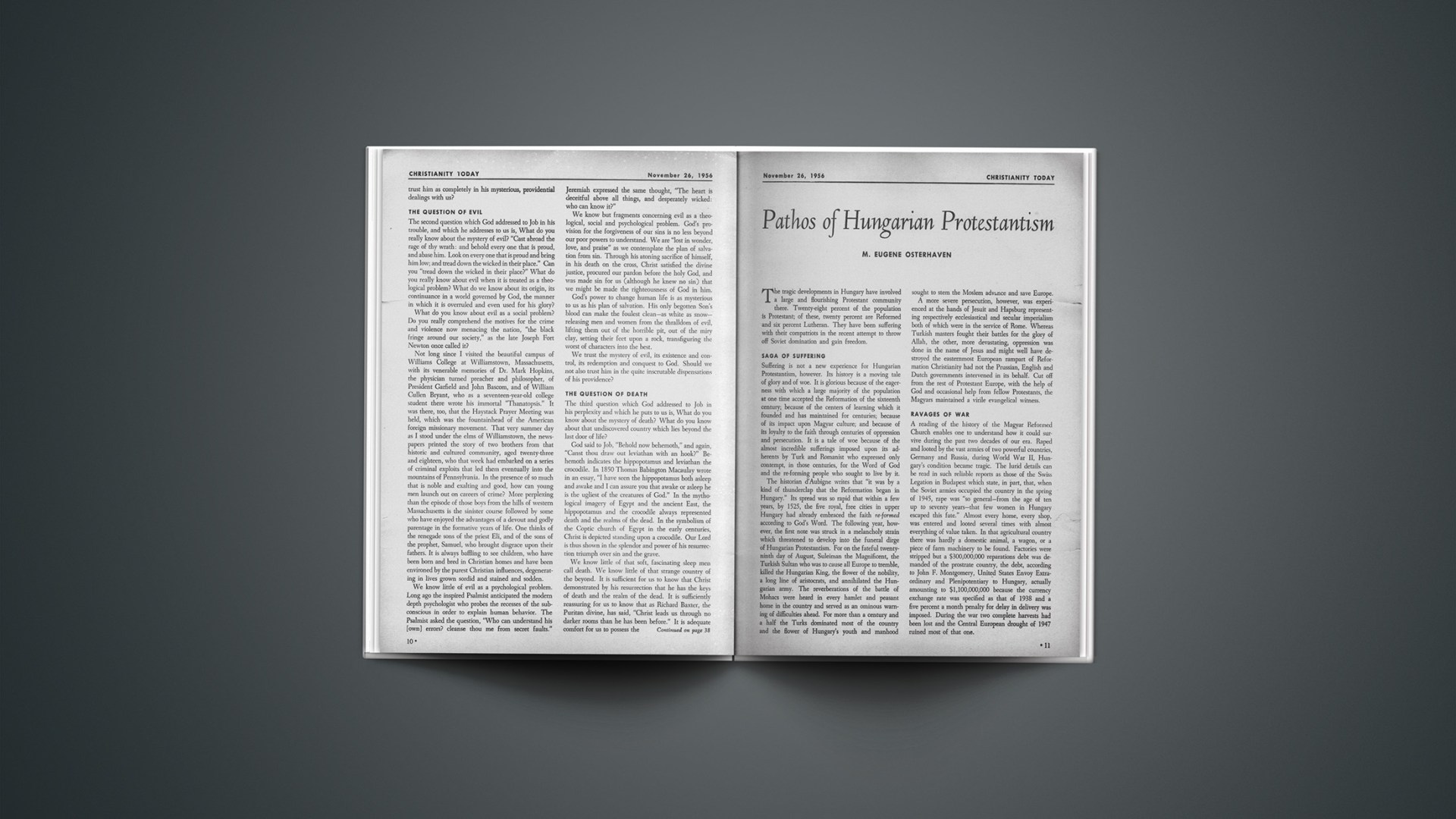Action In Burma
A plan for the Burma Baptist Convention to take over duties previously handled by missionaries was approved by delegates to the 88th annual meeting in Rangoon.
Proposed by the missionaries themselves, the plan has a goal of making Baptist work in the country self-supporting, self-directing and self-propagating.
Main points of the agreement deal with the turning over of church properties on the mission field “to the appropriate holding bodies representing the indigenous Christian community,” assigning to the convention the responsibility of determining the number of missionaries needed in Burma, and giving the convention the major responsibility for financial needs.
Prime Minister U Ba Swe, in an address to the meeting, emphasized the guarantees of religious freedom in Burma.
‘Mistaken Policy’
A decree ordering full freedom of religion throughout Communist North Vietnam has been issued by the Council of Ministers.
The order reportedly corrects “a mistaken policy of the government in the past.”
North Vietnam is the first Asian Communist nation publicly to proclaim deviation from the Moscow line. It is also the first to admit the existence of anti-religious persecution within its boundaries.
From time to time, the Hanoi Radio has broadcast statements claiming that all religious groups in the country enjoy full liberty, despite reports to the contrary. Most of the North Vietnamese are Buddhists. The Christian minority is predominantly Roman Catholic. A majority of the Christians fled to the South after partitioning of the country.
“Freedom of religion must be strictly respected,” the new order declared. It specifically directed that the “unjustified” house detention or “unlawful” arrest of religious personnel be abolished.
Communist authorities in North Vietnam 17 months ago issued a decree of religious freedom which nevertheless provided many loopholes for persecution. One of the loopholes was the proviso that “when they preach, ministers of religion must impress on their flocks … respect for the democratic authorities and the laws of the Democratic Republic of Vietnam.”
Another was a clause which said “the law will punish everyone who uses the pretext of religion to attack peace, unity, independence and democracy, to make propaganda for war, to break popular opinion, to keep believers from their duty as citizens, to attack other persons’ freedom of belief and thought, or to commit any other violation of law.”
These provisions were subject to communist interpretations that made religious groups especially vulnerable to attack.
Property confiscated during the land reform movement “will be restored to owners,” according to Hanoi Radio. But it did not say whether this measure applied to church-owned property.
The new decree may contain hidden implications, but for the moment Christians are grateful for the tiny crack of religious freedom in the Bamboo Curtain.
Turn About
Christian missionaries in India, who have been the target for much government criticism in recent months, received warm praise recently from Gov. K. N. Munshi of Uttar Pradesh.
At celebrations marking the centenary of the Methodist Church in southern Asia, he lauded missionaries for a century of “useful educational and humanitarian work. Above all, by the impact of their work, they have imparted a keener sense of mission to other religious and philanthropic bodies.”
Gov. Munshi said the “comparatively small Christian community of India” (5,000,000 Protestants in population of 400,000,000) had taken its full part in national life.
“Many Christians participated in the struggle for freedom,” he said, “and many now bear heavy responsibilities in this country.” He cited the role of Protestantism in “restoring to man his sense of individual dignity and freedom.”
The governor warned missionaries of all faiths, however, against an “active campaign of mass conversion” for social, political or economic motives. He said this could not be considered a “religious act,” and was bound to create resistance.
Scores of foreign Christians in India have been falsely charged with political activity and many have been sent home. Resident permits are extremely difficult to obtain, except in the cases of medical missionaries and other professional people.
Observers predict that the days of missionaries in India are numbered, but point out that God seems to be using the situation to make the Protestant Indian Church, under Indian leadership, stronger than it has ever been under foreign support.
Research In India
The National Christian Council of India has voted to establish a research center for the study of non-Christian religions in the country—especially Hinduism.
Dr. P. D. Devanandan, visiting professor at Union Theological Seminary in New York, will be invited to serve as the center’s director.
A statement of objectives for the center said “it will be allowed from the beginning to develop its own atmosphere where a free intercourse between scholarly Christians and leading non-Christians may take place.”
Religious Freedom Asked
Full religious freedom was given major emphasis in a document drawn up in Singapore by the Malayan Christian Council as a guide to the kind of country Christians want Malaya to become when it receives its independence from Great Britain next year.
“It is significant that the question of religious freedom has been given careful consideration by many Asian nations in recent years, notably India and Pakistan in their final constitutions and Indonesia in provisional constitutional proposals,” the Christian Council said.
“In all these,” the Council added, “there is careful protection of minorities in fundamental freedoms and the giving of full religious freedom to all residents of the country.”
Christians are a minority in Malaya.



